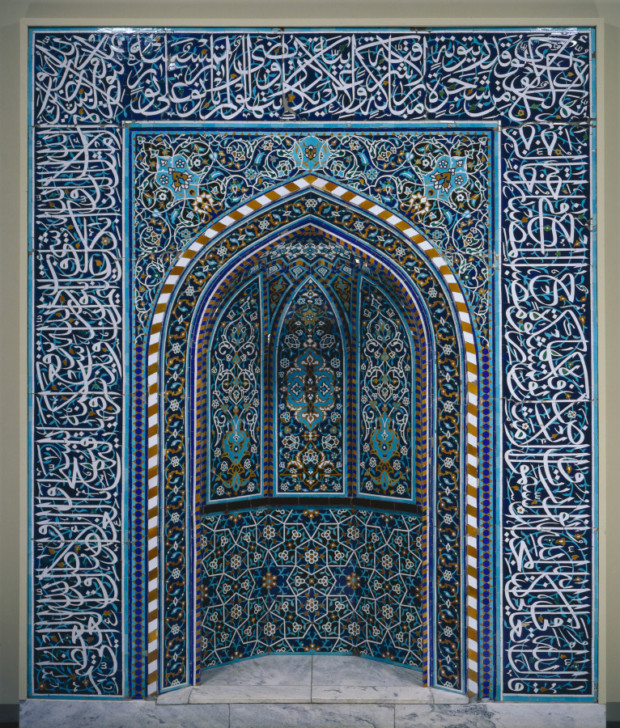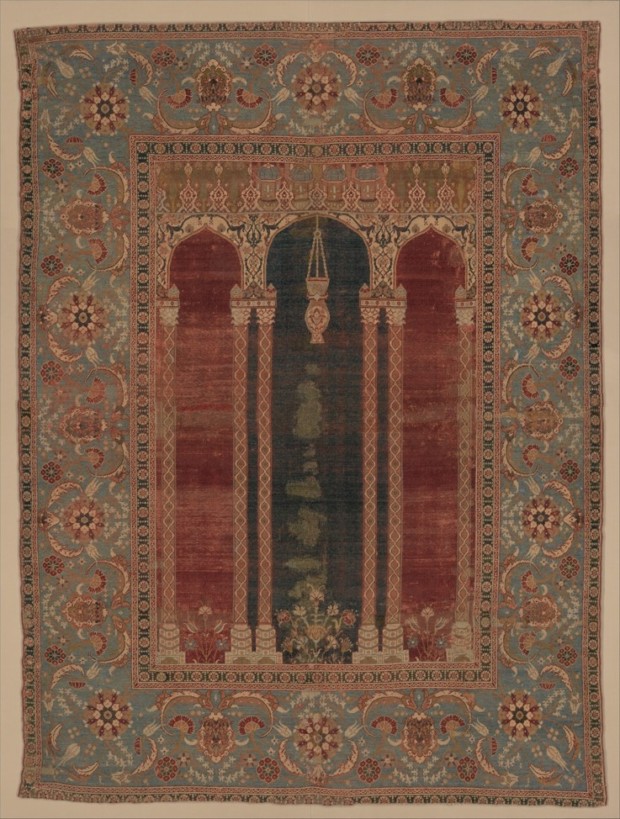Sculpting Serenity: Gandhara’s Indo-Greek Buddhist Art
The ancient region of Gandhara, the “Land of Fragrance,” played a vital role in developing Buddhist art and deepening its global...
Maya M. Tola 18 July 2024
What is a mihrab? It’s a typically semi-circular niche in a mosque. It’s usually inserted in the center of a Quibla wall, the wall which points towards Mecca, the holy direction of Muslim prayers. With time, mihrabs turned from simple apse-style concavities into highly ornamented sites, literally little masterpieces of Islamic art!

The first documented semi-circular mihrab is that of the Mosque of the Prophet at Medina. What was once the Prophet’s house, which later turned into a place of congregation for his followers and thus the first mosque, was reconstructed into a proper representative construction during the caliphate of al-Walid I (705-715 CE).
However, mihrabs might have been in use even before the revelation of the Prophet, just dedicated to different purposes. They had always been reserved for people of high importance and elevated social status. The word mihrab itself stood for an “elevated” place, the most important place in the house.

As the Arabian Peninsula had always been a place of religious and cultural mingling, mihrabs might have been inspired by other cultures. In the image above we can see an example of a niche used in Jewish synagogues. Meanwhile, the Romans also used niches for displaying statues of gods.

Since decorations in mosques could not depict animate creatures (because then the artist would assume the role of the Creator which belongs to God only), calligraphy and arabesque took the place of the highest importance in religious art. The inscriptions on the wall of this mihrab are a citation from the Quranic Chapter of Light (24:35), which was frequently used in mosques:
God is the light of the Heavens and the Earth.
His Light is like a niche in which is a lamp-the lamp enclosed in glass-the glass, as it were, a glistening star. From a blessed tree it is lighted, the olive neither of the East nor of the West, whose oil would well neigh shine out, even though fire touched it not! It is light upon light. God guideth whom He will to His light, and God setteth forth parables to men, for God knoweth.

This also explains the recurring motif of a lamp hanging in the mihrab with a tree growing below, as we can see on this beautiful carpet used for prayer.
DailyArt Magazine needs your support. Every contribution, however big or small, is very valuable for our future. Thanks to it, we will be able to sustain and grow the Magazine. Thank you for your help!